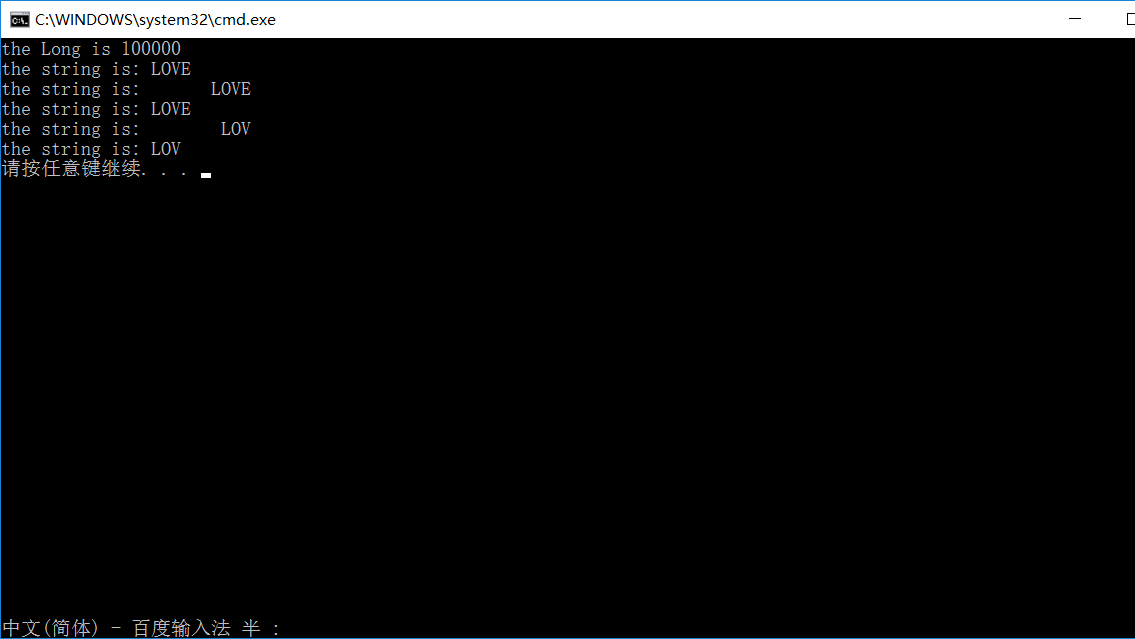1:代码如下:

// 2.3.cpp : 定义控制台应用程序的入口点。 // #include "stdafx.h" int main() { long iLong=100000; /*定义长整型变量,为其赋值*/ printf("the Long is %ld ",iLong); /*输出长整型变量*/ printf("the string is: %s ","LOVE"); /*输出字符串*/ printf("the string is: %10s ","LOVE"); /*使用m控制输出列*/ printf("the string is: %-10s ","LOVE"); /*使用-表示向左靠拢*/ printf("the string is: %10.3s ","LOVE"); /*使用n表示取字符数*/ printf("the string is: %-10.3s ","LOVE"); return 0; } /* %ms 表示输出字符串占m列,如果字符串本身长度大于m,,则突破m的限制,将字符串全部输出;若字符串小于m,则用空格键进行左补齐。可以看到在字符串“LOVE”前后存在 6个空格。*/ /* %-ms 表示如果字符串长度小于m,则在m列范围内,字符串向左靠,右补空格。*/ /* %m.ns 表示输出占m列,但是只取字符串左端n个字符,这n个字符输出在m列的右侧,左补空格。*/ /* %-m.ns ,其中m、n的含义同上,n个字符输出在m列的左侧,右补空格。如果n>m,则m自动取n值,即保证n个字符正常输出。*/
运行结果:

